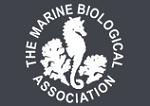APHOTOMARINE
An educational resource dedicated mainly to the photography
and diversity of marine life that can be found in coastal waters
and intertidal areas of Great Britain and Ireland by David Fenwick.

Leucosolenia complicata
- found on Plumaria plumosa 1
Silky lace sponge
Leucosolenia complicata
- found on Plumaria plumosa 2
Silky lace sponge
Leucosolenia complicata
- found on Plumaria plumosa 3
Silky lace sponge
Leucosolenia complicata
- on Plumaria plumosa 1
Silky lace sponge
Leucosolenia complicata
- close-up 1
Silky lace sponge
Leucosolenia complicata
- surface under microscope 1
Silky lace sponge
Leucosolenia complicata
- spicules with 0.1mm rule 1
Silky lace sponge
Leucosolenia complicata
- spicules with 0.1mm rule 2
Silky lace sponge
Leucosolenia complicata
- spicules with 0.1mm rule 3
Silky lace sponge
Leucosolenia complicata
- Plumaria plumosa frond 1
Species found on the lowershore under a rock overhang on the small red algae Plumaria plumosa, with which it is associated. Species found at Tavis Vor, Mousehole, Cornwall. 02.07.15. The sponges, Grantina compressa and Sycon ciliatum were also present on Plumaria plumosa.
APHOTOMARINE supports open source data recording and sharing for the benefit of wildlife, recorders, research, science and education. The project recommends the following websites and works with the following bodies and organisations.
A website based on Sponges of the British Isles 1992 Edition, revised and extended, 2007, by Bernard Picton, Christine Morrow & Rob van Soest. Without a shadow of a doubt the best online resource to sponges of Britain and Ireland.
The Marine Biological Association or MBA, based in Plymouth, is one of the world’s longest-running societies dedicated to promoting research into our oceans and the life they support. Since 1884 the MBA has been providing a unified, clear, independent voice on behalf of the marine biological community.It has a growing membership in over 40 countries.
The National Biodiversity Network or NBN is a charity that supports open source data sharing and recording supporting conservation, science and education. "Why do recorders need open source?". Simply because it supports the core values of wildlife recording and the free use of records and data over a very wide network that includes partners like the Natural History Museum.
The taxonomy used here is based on that of the following database, which is also used by the MBA, NHM and the NBN.
The World Register of Marine Species or WoRMS.

